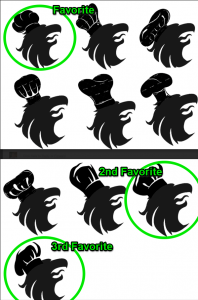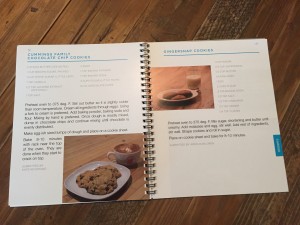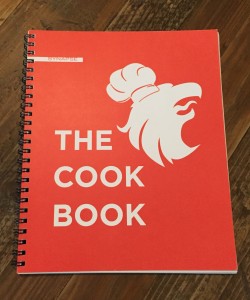Cooking is often talked about at my work. We have several really good chefs and they are all proud of their creations. Recipes are easy to share but transferring them one at a time is inefficient and prone to misplacement. A coworker and I decided to solve this problem by getting funding from our company and creating a cookbook.
We started by soliciting our coworkers for recipes. Everyone was limited to three of their favorites. We thought about limiting it to personal or family recipes but realized a lot of our favorites were pulled from another published cookbook. Recipes were placed into the following categories: breakfast, appetizers, entrees, desserts, and drinks. Recipes with high quality images were given priority in their applicable section.

Possible cover graphics
I did the initial formatting of the incoming recipes and created the cover graphics. I started with a logo of the unofficial Synapse mascot. I found several stock images of chef hats and added them to the mascot. I created an array of the options and polled the other author and our graphic designer. The best one was selected and I vectorized it so that it could be scaled without distortion.
We initially thought we could use one of the many online services (example) to print our cookbook but were not happy with the templates, print options, and costs. We decided to create our own template in Adobe Illustrator and print it using a local, professional service.
My coworker found an old Synapse template in illustrator that had a lot of the cases we were looking for. He did some tweaking of the size and loaded the recipes.

Cookbook table of contents
Each section has a title page and is color coded. The color is bled to the edge of the page so you can quickly turn to a specific section when the book is closed. Pictures take up a lot of the page, go into the margin, and then bleed off the page.

Cookbook content
We selected a heavy paper (100# gloss book stock) and a heavy cover (100# uncoated cover stock). The page material was chosen to showcase color images and have a little water resistance. A 10mm coil spiral was used so that the pages would lay flat when open to any page. In total, we had 85 pages of content.
The books were proofed and printed. They showed up just in time for people to grab one before taking off for the winter holiday season.

